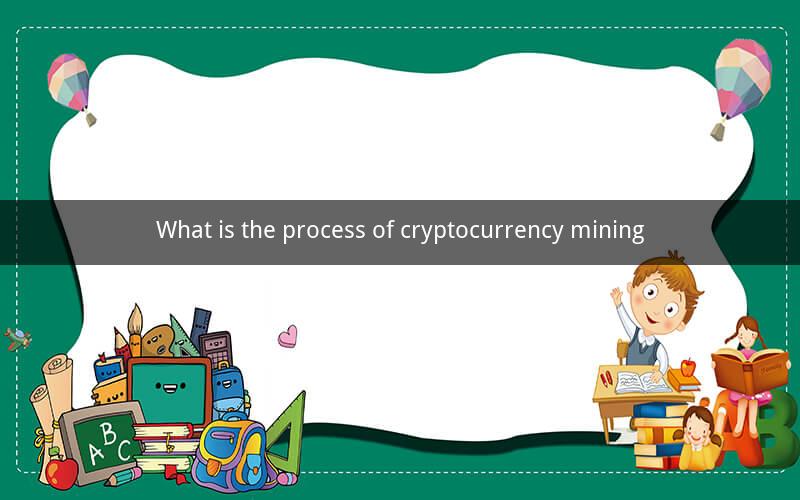
The Cryptocurrency Mining Process
Table of Contents
1. Introduction to Cryptocurrency Mining
2. The Role of Blockchain Technology
3. Understanding the Mining Hardware
4. Power Consumption and Efficiency
5. The Mining Algorithm
6. The Mining Pool Concept
7. Mining Pools vs. Solo Mining
8. The Importance of Security
9. The Economic Aspects of Mining
10. The Environmental Impact of Mining
1. Introduction to Cryptocurrency Mining
Cryptocurrency mining is the process of validating and adding new transactions to a blockchain. It involves using computer power to solve complex mathematical problems that secure the network and maintain its integrity. Miners are rewarded with cryptocurrency for their efforts.
2. The Role of Blockchain Technology
Blockchain technology is the foundation of cryptocurrency mining. It is a decentralized digital ledger that records transactions across multiple computers. Each block contains a list of transactions and is linked to the previous block, forming a chain. This ensures that the data is secure and tamper-proof.
3. Understanding the Mining Hardware
Mining hardware is crucial for cryptocurrency mining. It consists of specialized computers called miners, which are designed to perform complex calculations at high speeds. The most popular hardware for mining cryptocurrencies is the ASIC (Application-Specific Integrated Circuit) miner.
4. Power Consumption and Efficiency
Power consumption is a significant factor in cryptocurrency mining. Miners require a considerable amount of electricity to operate, which can lead to high energy costs. Therefore, it is essential to choose energy-efficient hardware to minimize expenses.
5. The Mining Algorithm
The mining algorithm is a set of rules that miners must follow to solve mathematical problems. Different cryptocurrencies use different algorithms, such as SHA-256 for Bitcoin and Scrypt for Litecoin. The algorithm determines the complexity of the problems and the rewards for successful solutions.
6. The Mining Pool Concept
Mining pools are groups of miners who work together to increase their chances of finding a solution to the mining algorithm. When a solution is found, the rewards are distributed among the pool members based on their contribution. This method reduces the risk of not receiving a reward.
7. Mining Pools vs. Solo Mining
Mining pools and solo mining are two popular methods for mining cryptocurrencies. While mining pools offer a higher chance of receiving rewards, solo mining can be more profitable if the miner is successful. However, the chances of solo mining success are significantly lower.
8. The Importance of Security
Security is a critical aspect of cryptocurrency mining. Miners must protect their hardware and software from potential threats, such as malware and hacking attempts. Additionally, they should use secure wallets to store their mined cryptocurrency.
9. The Economic Aspects of Mining
The economic aspects of cryptocurrency mining involve the cost of hardware, electricity, and other operational expenses. Miners must ensure that their mining operation is profitable by comparing their potential rewards with their expenses.
10. The Environmental Impact of Mining
Cryptocurrency mining has a significant environmental impact due to the high energy consumption. The carbon footprint of mining can be reduced by using renewable energy sources and optimizing mining operations.
Questions and Answers
1. What is the primary purpose of cryptocurrency mining?
- The primary purpose of cryptocurrency mining is to validate and add new transactions to a blockchain, ensuring the network's security and integrity.
2. How does blockchain technology benefit cryptocurrency mining?
- Blockchain technology provides a decentralized, secure, and tamper-proof ledger for recording transactions, making it ideal for cryptocurrency mining.
3. What are the main components of mining hardware?
- The main components of mining hardware include the ASIC miner, power supply, cooling system, and storage device.
4. Why is power consumption a significant concern in cryptocurrency mining?
- Power consumption is a significant concern because it leads to high energy costs, which can affect the profitability of mining operations.
5. What are the differences between SHA-256 and Scrypt algorithms?
- SHA-256 is a mining algorithm used for Bitcoin, while Scrypt is used for Litecoin. They differ in terms of complexity and the amount of computational power required.
6. How do mining pools benefit miners?
- Mining pools increase the chances of finding a solution to the mining algorithm, reducing the risk of not receiving a reward.
7. What are the main factors to consider when choosing a mining pool?
- When choosing a mining pool, consider factors such as fees, reputation, pool size, and the ease of joining.
8. Why is security important in cryptocurrency mining?
- Security is crucial to protect miners from potential threats, such as malware and hacking attempts, and to ensure the safety of their cryptocurrency.
9. How can miners optimize their mining operation to increase profitability?
- Miners can optimize their mining operation by choosing energy-efficient hardware, minimizing power consumption, and staying informed about market trends.
10. What can be done to reduce the environmental impact of cryptocurrency mining?
- To reduce the environmental impact, miners can use renewable energy sources, optimize their operations, and support regulations promoting sustainable mining practices.